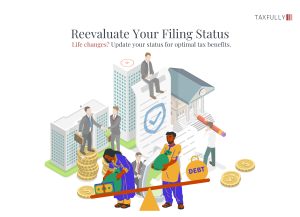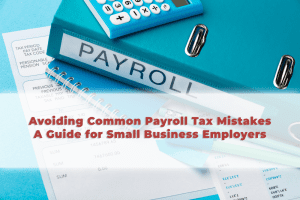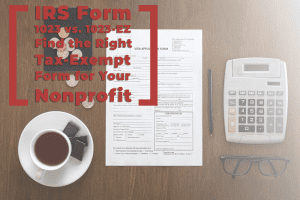As the end of the year approaches, it’s time to get proactive about tax planning. Tackling these tasks now can help you minimize your tax liability, maximize deductions, and ensure a stress-free filing process. Whether you’re a first-time filer or a seasoned taxpayer, implementing these year-end tax strategies will put you in the best position for the upcoming tax season.
1. Reevaluate Your Filing Status
Your filing status determines much more than your tax bracket—it affects the credits you qualify for, the deductions you can claim, and even the amount of tax you owe. Significant life events, like getting married, having a child, or even a divorce, can lead to changes in your filing category. For instance, welcoming a new baby might make you eligible for the Child Tax Credit, while a change in marital status could shift you from filing jointly to filing separately.
The IRS provides five filing options: Single, Married Filing Jointly, Married Filing Separately, Head of Household, and Qualifying Widow(er). Choosing the right one requires a clear understanding of your current life circumstances. Take this opportunity to assess your situation and consult a tax professional if you’re uncertain. Making the wrong choice could mean missing out on credits and deductions tailored to your needs.

2. Decide Between Standard Deduction and Itemizing
The decision to take the standard deduction or itemize your deductions is a cornerstone of tax planning. The standard deduction is straightforward, allowing you to claim a fixed amount without needing additional documentation. However, if you’ve had substantial expenses, like mortgage interest, medical costs, or charitable contributions, itemizing might provide greater savings.
For 2023, the standard deduction is $13,850 for single filers and $27,700 for married couples filing jointly. If your itemized deductions exceed these thresholds, it’s worth the extra effort to compile the necessary records. Keep in mind that any charitable donations you plan to claim must be made by December 31. This could be a great time to give to a cause you care about while also reducing your taxable income.

3. Maximize Your Retirement Contributions
One of the most effective ways to reduce your taxable income is to contribute to your retirement accounts. If you have access to a 401(k) or 403(b), increasing your contributions can lower your income subject to taxes while building a more secure future. For those without employer-sponsored plans, traditional IRAs or SEP IRAs offer similar benefits.
Additionally, if you’re over 72, ensure you meet your Required Minimum Distribution (RMD) obligations. Missing an RMD can result in hefty penalties, so double-check your accounts. Retirement contributions not only reduce your taxable income but also set you on a path to long-term financial health, making them a win-win strategy.
4. Make the Most of Your Health Savings Account
If you’re enrolled in a high-deductible health plan, your Health Savings Account (HSA) offers unparalleled tax benefits. Contributions are tax-deductible, growth is tax-free, and withdrawals for qualified medical expenses are tax-exempt. This triple tax advantage makes HSAs one of the most powerful tools for reducing taxes while covering healthcare costs.
Before the year ends, review your contributions to ensure you’ve maximized your allowable amount. HSA funds can be used for a range of expenses, from prescriptions and dental care to eyeglasses and therapy. Unlike Flexible Spending Accounts (FSAs), HSA balances roll over each year, allowing you to save for future healthcare needs without the pressure to spend immediately.
5. Don’t Let Flexible Spending Account Funds Go to Waste
Unlike HSAs, most FSAs operate on a “use-it-or-lose-it” policy. If you have unused funds in your FSA, now is the time to spend them on eligible expenses. These might include medical supplies, copays, or dependent care services.
Check with your employer to see if they allow a small rollover or offer a grace period into the new year. If not, make a list of qualifying expenses you can address before December 31. Losing these funds to deadlines is easily avoidable with a little planning.
6. Use Tax-Loss Harvesting to Offset Capital Gains
If your investment portfolio includes losses, tax-loss harvesting can be a strategic way to offset gains and reduce taxable income. This involves selling underperforming assets to balance out the profits from successful investments.
For example, if you’ve made gains from selling stocks earlier in the year, offsetting those gains with losses from other investments can lower your overall tax liability. Even if your losses exceed your gains, you can deduct up to $3,000 from your taxable income. However, be mindful of the IRS’s wash sale rule, which prevents you from repurchasing the same security within 30 days.
7. Estimate Your Tax Bill Early
The last thing anyone wants is an unexpected tax bill. Estimating your taxes ahead of time allows you to address any potential shortfalls and avoid penalties. Tools like online tax calculators or guidance from a CPA can give you a clear picture of your financial standing.
If you anticipate owing taxes, making an early payment can reduce interest and penalties. This step is particularly important for self-employed individuals or those making quarterly estimated payments. By preparing now, you’ll have time to adjust your financial plans and avoid unnecessary stress in April.
Stay Ahead of Tax Season
Taking care of these tax to-dos before December 31 ensures you’ll start the new year with your finances in order. From maximizing deductions to optimizing retirement contributions, these strategies can significantly impact your tax bill.
Ready to simplify your tax planning and filing? Visit Taxfully today for expert advice and tailored solutions that make tax season stress-free. Don’t wait—start planning now to save money and time when it matters most.




